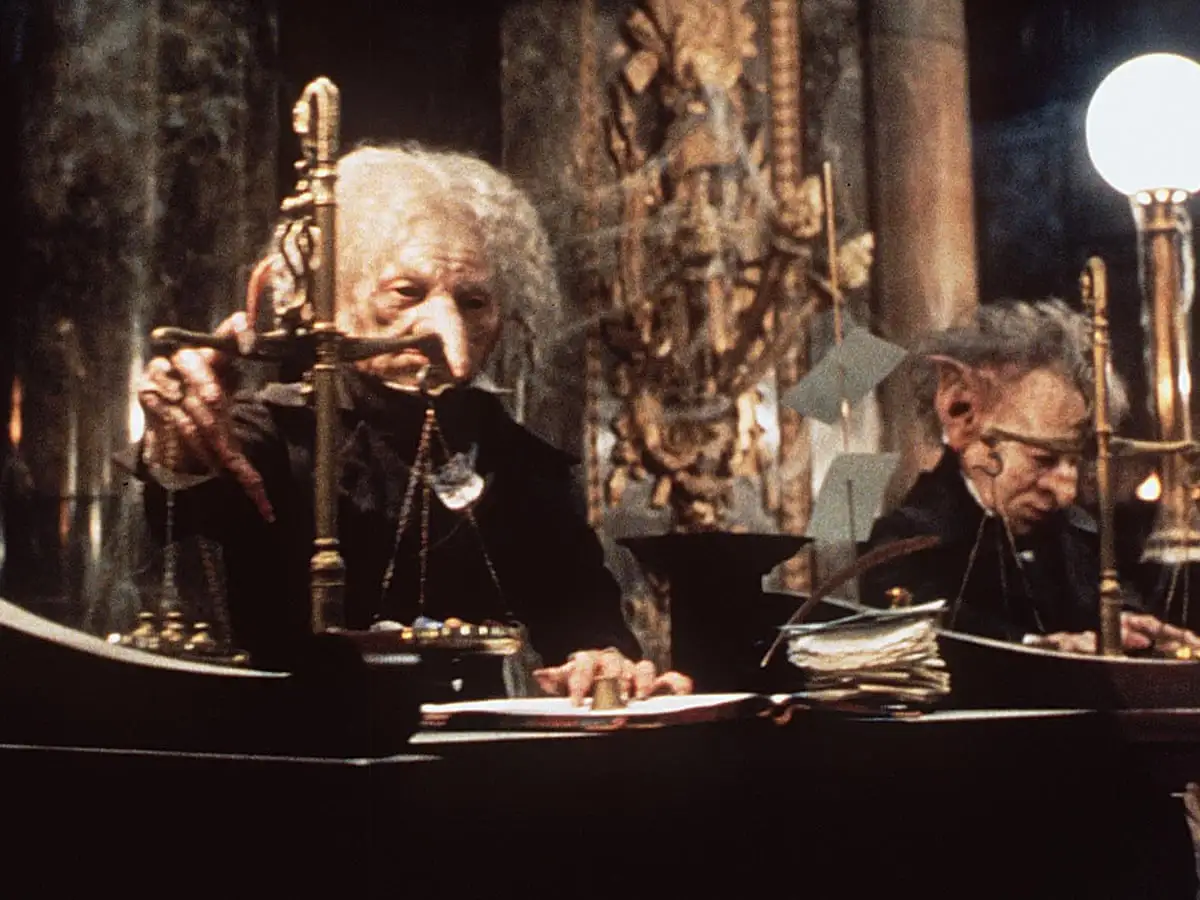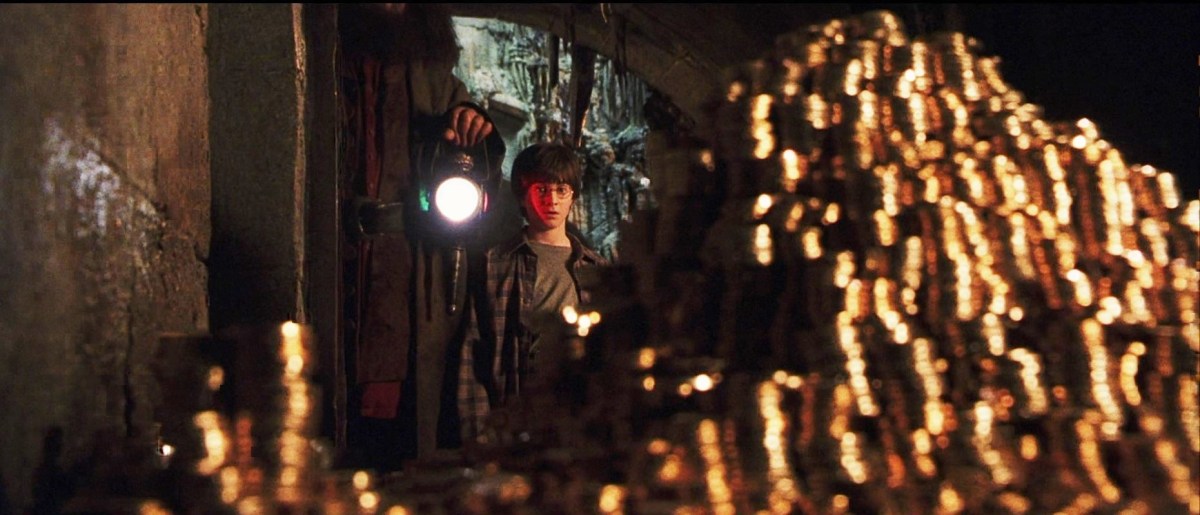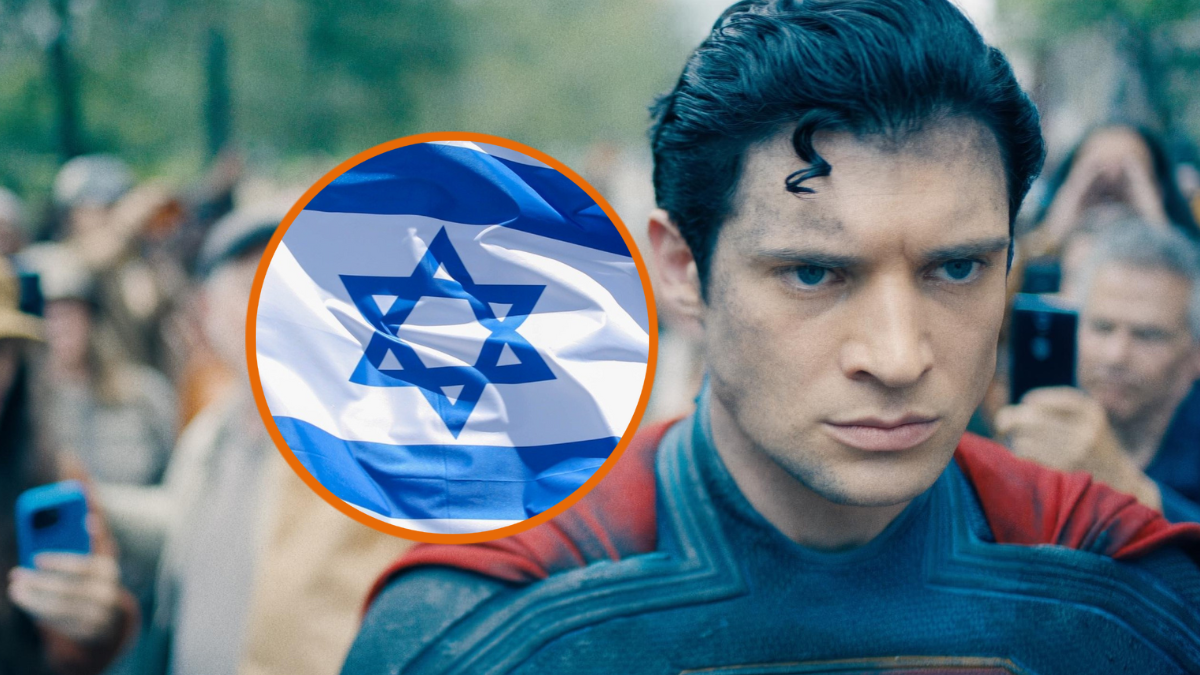When you think of Harry Potter, the economics of the wizarding world might not be the first thing that comes to mind.
When Harry Potter was introduced to the strange new world in The Sorcerer’s Stone, a trip to Gringotts Wizarding Bank was an early excursion in his journey.
In a grand, marble building on the north side of Diagon Alley, Harry Potter met the goblins who operated the bank and discovered many services that muggles would find familiar. That included a bureau de change, which enabled muggle money to be traded for wizarding money. The bank could also issue checks and banknotes, complete general transactions, and had a postal system of its own.
Hagrid guided Harry around the bank, telling the young wizard that Gringotts was second only to Hogwarts School of Witchcraft and Wizardry as the safest place in the wizarding world. Aside from the bank’s various security measures, Hagrid explained that the goblins who ran the bank were so greedy that they would protect money and valuables at any cost. In fact, the characterization and appearance of the goblins in the film series recently attracted criticism.
Given the bank’s reputation, it must have been unsettling when the bank fell under Voldemort’s control, and the Ministry of Magic allowed him to take control of security. That wasn’t the first time He Who Shall Not Be Named infiltrated the bank. In 1991, around the time Harry Potter first visited Gringotts, Quirinus Quirrell almost managed to steal the Sorcerer’s Stone from Vault 713.
With no known competitor, Gringotts had a monopoly on the money of the wizarding world. Precious possessions and funds were stored safely in the bank’s vaults hundreds of miles underground, including those in Harry Potter’s vault 687.
In 2016, ingenious Reddit user NeokratosRed worked out Harry Potter’s wealth, using the mounds of Galleons stacked in Harry’s vault as seen in the first film. With some well-applied geometry, they calculated that there were a total of 50,625 Galleons in the vault.
But how much is a Galleon in muggle money?
The value of a Galleon

Galleons, the wizarding world’s highest-value coin, had circulated in the magical economy since the 13th century. Every Galleon was made of gold, and one coin was equal to 17 Sickles or 493 Knuts. Nobody expected wizards to have decimalized their currency, did they? But the magical community and the bank’s goblins had established an exchange rate, as mentioned several times in the Harry Potter books.
J.K. Rowling went into more detail on the value of a Galleon during a charity interview in 2001. While she stressed that the exchange varied, she estimated that one Galleon is worth approximately five pounds sterling (£5). That’s the equivalent of six and a half dollars ($6.50). Notably, Rowling didn’t explain if that was a good or bad day on the exchange rates.
NeokratosRed’s calculation of Harry Potter’s worth applied a higher valuation of one Galleon. But using J.K. Rowling’s estimate, the young Wizard was looking at a sizable stash. If Harry still had 50,625 Galleons in Vault 687 in 2001, that would have equated to £253,125 or $339,086. So it’s no wonder Harry looked so shocked when he saw the contents of his vault. In 2022, that would be worth £388,395 or $520,379.
If he maintained or even grew his holdings after the Battle of Hogwarts and the conclusion of the Second Wizarding War, Harry’s primary concern was probably avoiding the pitfalls of Gringotts’ security systems when accessing his funds. The bank was known to have employed dragons and trolls at various points. But sphinxes were said to have caused the most problems for customers trying to access their vaults when they failed to answer their riddles correctly.











Published: Jan 30, 2022 08:54 pm